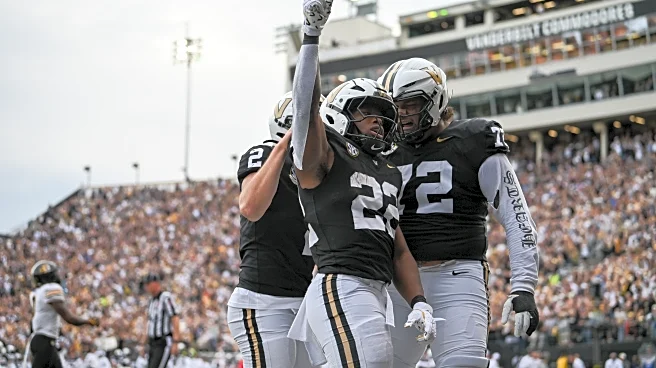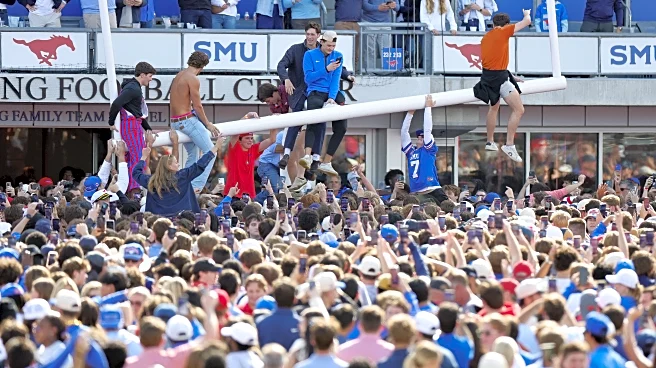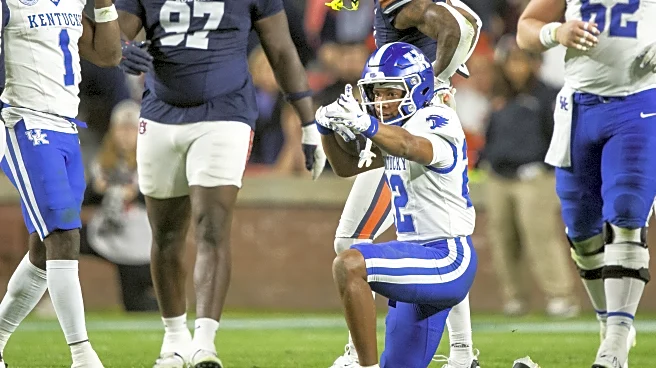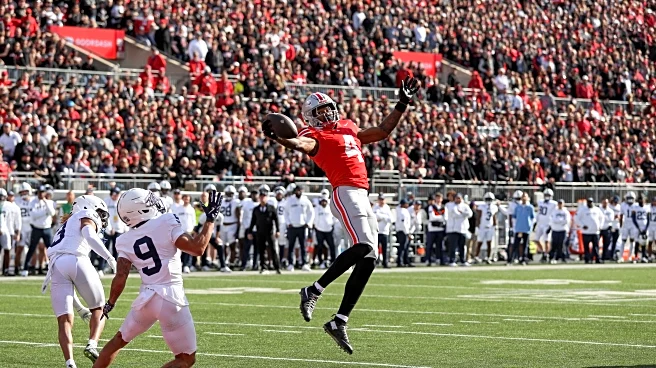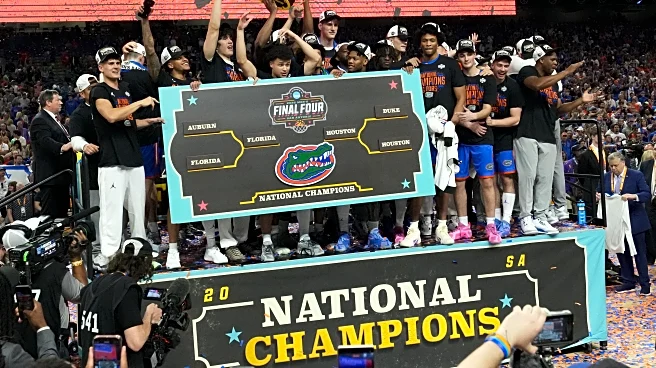What's Happening?
The Southeastern Conference (SEC) is demonstrating significant strength in women's college basketball, with five of its teams projected to occupy the top two seed lines in the 2026 NCAA tournament, according
to preseason Bracketology. South Carolina and Texas are anticipated to be No. 1 seeds, while Oklahoma and Tennessee are projected as No. 2 seeds. The SEC's performance is expected to heavily influence the tournament's top seed lines, particularly if Oklahoma and Tennessee manage to upset South Carolina or Texas. The conference's depth and competitiveness are poised to shape the NCAA tournament field as the season progresses.
Why It's Important?
The SEC's dominance in women's college basketball could have substantial implications for the NCAA tournament. If Oklahoma and Tennessee succeed in defeating South Carolina or Texas, it could tighten the SEC standings and enhance the profiles of the Sooners and Lady Vols. This scenario would bolster the SEC's presence among the top seeds, potentially affecting the tournament's overall structure. The strong performance of SEC teams underscores the conference's competitive edge and could lead to increased visibility and opportunities for its member schools in the national spotlight.
What's Next?
Key matchups are scheduled that could impact the SEC standings and seed projections. South Carolina will visit Oklahoma on January 22, and Tennessee will host Texas on February 15. These games are critical as they could alter the seed lines and standings within the SEC. The outcomes will be closely watched, as they may influence the tournament's seeding and the competitive dynamics within the conference.
Beyond the Headlines
The SEC's prominence in women's college basketball highlights broader trends in collegiate sports, including the impact of conference realignment and the strategic importance of nonconference play. The conference's ability to maintain top seed positions reflects its investment in athletic programs and the cultivation of talent, which could have long-term effects on recruitment and the overall landscape of college basketball.



